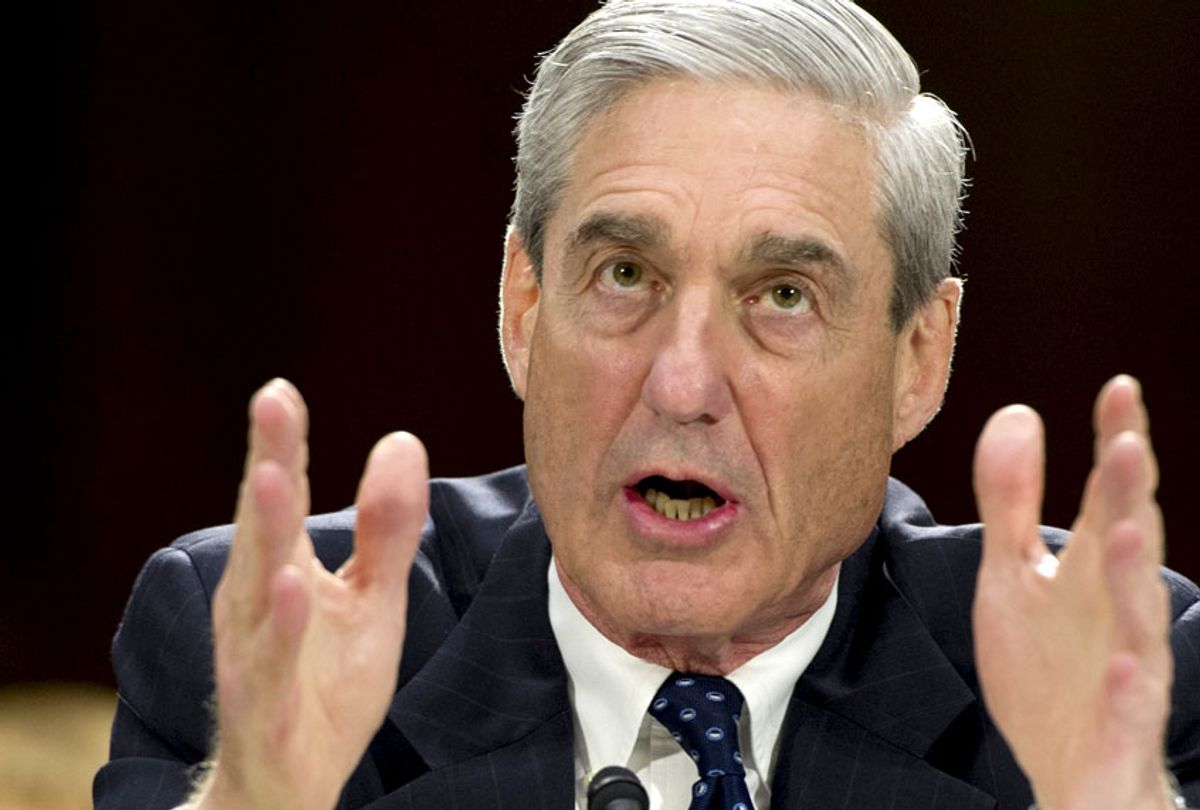When Attorney General Bill Barr announced the “principal conclusions” of Special Counsel Robert Mueller’s report, many observers were puzzled by his claim that the investigation did not come to a conclusion about whether President Donald Trump obstructed justice, and he instead just laid out the evidence for and against such a charge.
One reason this was so confusing, it turns out, is that it wasn’t exactly true. Mueller didn’t decide to simply lay out the case on both sides; he details 11 different incidents of possible obstruction of justice and lays out an extremely compelling case for the charge in several of them. As Politico’s Kyle Cheney noted, in at least two of the instances, Mueller presented no mitigating arguments for the charge.
What he did do is refrain from officially concluding that Trump obstructed justice. But again, he did so because of a different reason than what Barr emphasized. Mueller makes clear that it was the Justice Department’s Office of Legal Counsel opinion that says a sitting president cannot be indicted that constrained his conclusions, something Barr claimed didn’t factor at all into the final decision.
Mueller noted that the opinion holds that not even a sealed indictment of the president would be appropriate because it could potentially leak and damage the president’s reputation without providing a forum for rebuttal. Mueller noted that the “stigma and opprobrium” that “could imperil the President’s ability to govern.” He said that this is true even if a prosecutor simply concluded such charges against the president would be appropriate in an internal document.
The special counsel’s team nevertheless agreed that it was appropriate to investigate the case and draft a report on the findings. And the report specifically noted, “if we had confidence after a thorough investigation of the facts that the president clearly did not commit obstruction of justice, we would so state. Based on the facts and applicable legal standards, we are unable to reach that judgment.”
As Vox reporter Andrew Prokop noted, this can be summarized briefly:
Ultimately, I think this move is too cute by half. It’s basically a wink and a nod to the audience, a breaking of the fourth wall. Mueller lays out persuasive and compelling evidence that Trump was obstructing justice, but refuses to conclude that that’s what he was doing. Concluding Trump obstructed justice, it seems, would raise problems of “stigma and opprobrium,” but essentially demonstrating that Trump is guilty of such a charge doesn’t.
This doesn’t make much sense. Mueller is trying to walk a fine line between fulfilling prosecutorial duties without overstepping his role, but the end result is a lot of hand-waving to distract from the obvious result. It elevates legal formalism over basic common sense.
After Barr sent his letter about Mueller’s principal conclusions, I argued that Mueller’s refusal to charge could be his disturbing legacy, because he was granting presidents the ability to get away with wild abuses of power.
In retrospect, I may have been too harsh, given that Mueller does make a compelling case that Trump obstructed justice and hands Congress the basis for impeachment — if the lawmakers will take it. But the narrow bit of wiggle room he carved out between being clear that he would exonerate Trump if he could be and hammering home that he absolutely can’t conclude Trump is guilty gave Barr all the space he needed to distort the report. This corrupt spin does nothing to help the cause of justice and makes Mueller’s caution look like mushy indecision.
Mueller clear thinks Trump obstructed justice. He should have just told us so.




Shares